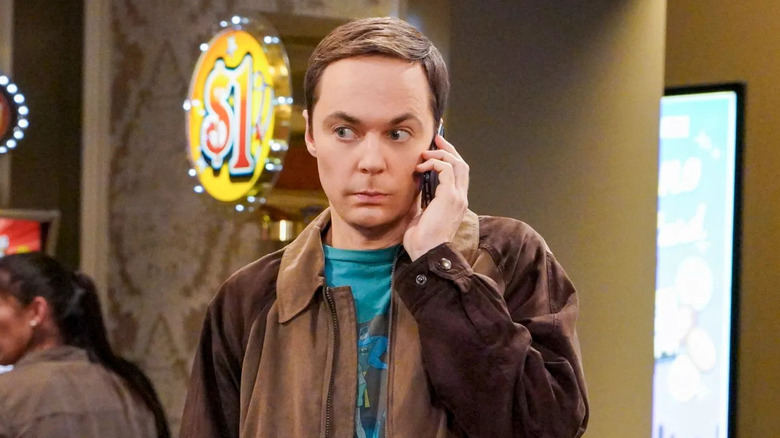The Big Bang Theory Creator Explains Why The Sitcom Wasn't Like Two And A Half Men
"The Big Bang Theory" has a reputation for being a rigorously fact-checked show, as well as a family-friendly sitcom that's far better known for "Bazinga" than boinking. Still, the show does have more than its share of naughtiness. Among its assorted spicy-ish moments is one memorably raunchy "The Big Bang Theory" episode that got banned in the UK, as well as a classic scene in season 6, episode 10, "The Fish Guts Displacement," which revolved around Sheldon Cooper (Jim Parsons) having to spank Mayim Bialik's Amy Farrah Fowler (something Parsons had an amusingly hard time shooting).
That being said, "The Big Bang Theory" creator Chuck Lorre — who already had the far naughtier hit sitcom "Two and a Half Men" under his belt — originally intended to make the geek-themed show far dirtier than the finished product ultimately was. During a panel discussion at PaleyFest 2016, Lorre explained how the audience feedback after the first episodes helped the makers of the show understand that "The Big Bang Theory" focused on very different characters than "Two and a Half Men" and had to approach its subjects accordingly:
"When we would put them in jeopardy and in situations where they were not being taken good care of, the audience was not happy with us. They also let us know when the show had become too risqué. This was one of the earliest lessons. This was not 'Two and a Half Men,' and there's a tone and quality to the characters that has to be honored, and I think we learned that by listening to the audience."
Two and a Half Men and The Big Bang Theory are very different shows by necessity
The majority of "Two and a Half Men" revolves around brothers Charlie (Charlie Sheen) and Alan Harper (Jon Cryer) and the latter's son Jake (Angus T. Jones). A very male-centric show, it paints Charlie as a misogynistic womanizer and Alan as a no-respect doormat who keeps ending up in embarrassing situations. As Chuck Lorre found out, such character archetypes and the show's more pronounced raunchiness were extremely bad fits for a series like "The Big Bang Theory," which revolves around comparatively nerdy and sheltered figures who would have very little common ground with someone like Charlie Harper.
Fortunately, the makers of the show ended up fine-tuning "The Big Bang Theory" to better reflect the nature of its characters. During the PaleyFest 2016 panel, Lorre credited the changes entirely to audience feedback, noting that it was key to the way the show learned to understand and embrace the awkward scientists at its center:
"The audience is teaching you in their response. They taught us early on, when we first began the series, they taught us about the characters more than we needed. We didn't understand how fragile these characters were, and despite their brilliance, they were very vulnerable, and the audience would let us know."
You can catch up with Sheldon and the gang by streaming "The Big Bang Theory" on HBO Max.

